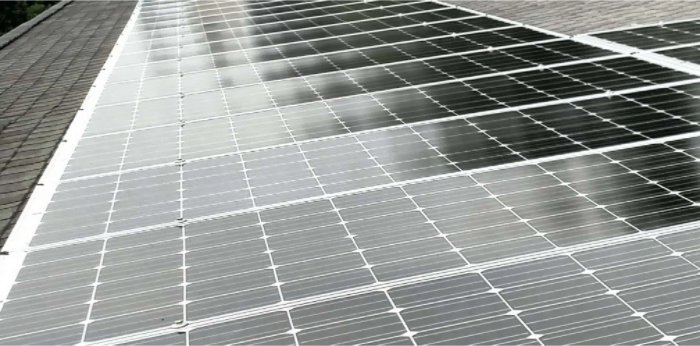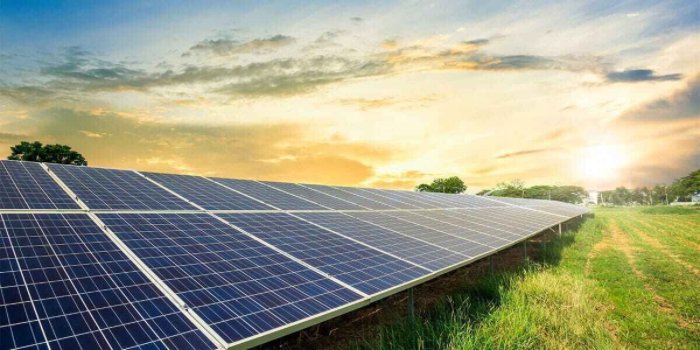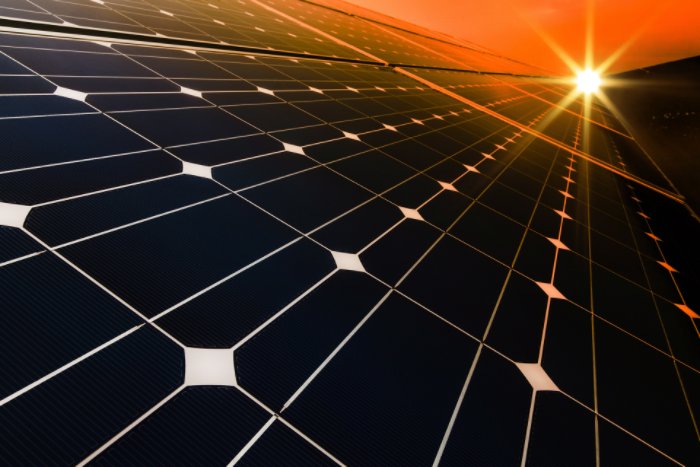Photovoltaic systems are clean, use sunlight, and have low maintenance, unlike traditional power generation which burns fossil fuels, emits greenhouse gases, and requires extensive infrastructure.
Energy Source
Solar Photovoltaic Energy Sources
Solar photovoltaic systems harness energy directly from sunlight, offering a renewable and sustainable alternative to traditional energy sources. Here’s a more detailed look at solar PV energy:
Efficiency: Standard silicon panels have an efficiency ranging from 15% to 20%. However, with advancements in technology, newer types of solar cells such as thin-film and PERC cells have shown efficiencies of up to 22%-25%.
Size: Residential panels are usually around 1.6m 2 each, but the size can vary based on the specific type of solar panel and its power output. Larger panels for commercial or utility-scale use can span several m 2 .
Power Output: On average, residential solar panels produce between 3 and 20 watts of power per square foot. However, the output of solar panels can vary depending on multiple factors, such as sunlight intensity, panel orientation, shading, etc.
Variability: Solar PV systems are entirely dependent on solar radiation for electricity generation, making them very weather and sunlight time-dependent. Nonetheless, advancements in energy storage technology, such as batteries, are helping to mitigate the effects of intermittency by storing excess energy for when the sun is not shining.
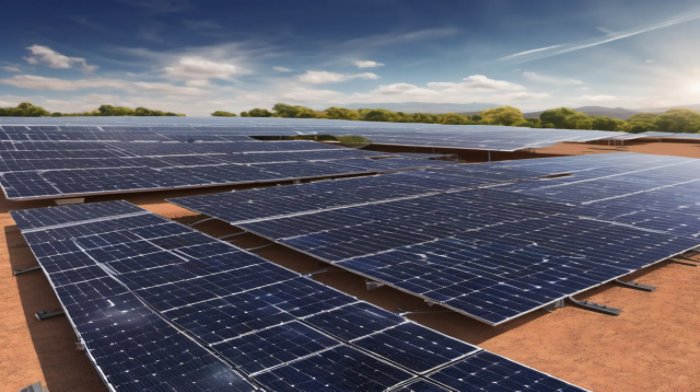
Traditional Energy Sources
Traditional power generation includes the use of fossil fuels such as coal, natural gas, and oil, or nuclear energy. These have been humanity’s primary sources of electricity for many years, but they come with environmental and logistical challenges.
Capacity: Staying true to their name, large conventional power plants can have capacities of hundreds of MW to several GWs, depending on size and technology. For example, large-scale coal-fired power plants often have capacities north of 1 GW.
Emissions: These power plants emit gases such as CO2, SO2, and NOx; greenhouse gases are a topic of concern due to their connection to global warming, but SO2 and NOx also contribute to air pollution. Coal is especially notable for its high emission of CO2 .
Fuels: Coal plants continuously burn fuel to operate, which it must receive via transport after extraction. Such large quantities of hauling and burning require substantial infrastructure and have heavy costs, both monitory and environmental.
Comparison table
This is a table that shows a comparison of the exxential details of these two power sources:| Feature | Photovoltaic Power | Traditional Power |
|---|---|---|
| Energy Source | Sunlight (renewable) | Fossil fuels or nuclear (non-renewable) |
| Emissions | None during operation | High, contributes to climate change |
| Location Flexibility | Can be installed on rooftops, in deserts, etc. | Usually located in remote areas |
| Operational Noise | Silent operation | Noise from machinery and operations |
| Maintenance | Low; no moving parts | High; complex machinery involved |
Environmental Impact
Solar photovoltaic energy has the least impact on the environment compared to conventional energy generation. Here’s a more comprehensive look at environmental benefits provided by solar photovoltaic energy: Reduced Emissions : Solar PVs generate electricity without producing polluting airs. No air pollution or greenhouse gases or other hazardous byproducts are released during the operation of solar PV. There is nothing to mitigate the best example of climatic changes across the sectors. Reduced Water Use : While traditional power plants are functioning, a large amount of water is being evaporated to cool down the systems. Therefore, it poses an intense pressure on freshwater sources and aquatic lives. Solar PVs use less water to function. The lone water need is the occasional rain-driven malaise. Reduced Land Use: Solar PVs are deployed across various lands such as rooftops, brownfields, or deserts. In effect, it will not affect the habitats or mighty ecosystems as much as conventional power generation. In general, such power generation consumes vast lands. Additionally, making some systems serve a dual purpose, such as providing shade for agriculture or animal grazing, could have some positive effects.Environmental Impact of Traditional Energy Sources
Traditional power generation, reliant on fossil fuels and nuclear energy, poses significant environmental challenges: Emissions : the CO2, SO2, NOx generated by the conventional power generations could become the source of air pollutions, acid rains, or climatic changes. In addition to that, if the generation of energies from coal were to increase, then the global emission of CO2 could also increase, hence contributing to global climate changes . This could have an impact on the streams or lakes or rivers wherein the cooling water is emitted. Potential hazards for the aquatic life forms Water Pollution : Other pollutions could be through land degradations due to mining and drilling along with soil erosions and deforestation. Water pollution could be due to thermal pollutions as well as the discharge of cooling water and accidental or purposeful discharges of the waste or spillage of chemical pollutants. The water from the lakes or rivers or streams exposed to these end products could get contaminated and therefore could be a potential risk for aquatic life or the wildlife as a whole. Additionally, it could also be a risk factor for human consumption. Land degradation : Mining and drilling along with the power generation stations require considerable workspaces. The sites could lead to land erosion and deforestation as well as habitat destruction.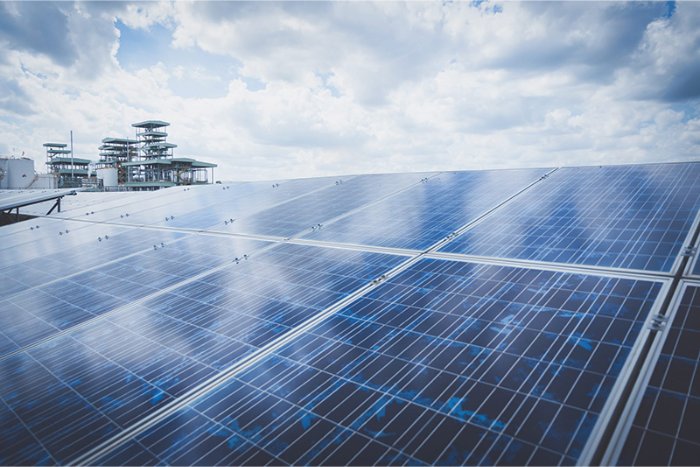
Installation and Operation Costs
Installation Costs of Solar Photovoltaic Energy
There are several types of expenses that should be taken into account when it comes to installation of solar photovoltaic energy. First of all, it is equipment costs. There is no need to say that the most predominant expense when it comes to these types of system is the cost of solar panels. For the residential purposes it is estimated to be between $0.75 and $1.50 per watt. In addition to that, there are other accompanying components such as inverters, mounting hardware, or wiring that should be paid for .
Labor costs is another factor that impact the installation of solar energy. It is to be noted that the installation of such system depends on many factors such as size of the system, its complexity, or the location.
There are also several fees to be paid – permitting and inspection requirements . Lastly, there are some additional costs: so called ‘soft costs’. They encompass costs related to customer acquisition, financing, or project development and can actually amount nearly 50% or even more of the costs.
Operation Costs of Solar Photovoltaic Energy
Unfortunately, even though solar photovoltaic energy has very few operation costs, it is not free from them.
The first expenses that should be mentioned and that are likely to take place refer to maintenance costs. In this respect, it is important to mention that lifetime of photovoltaic solar panels is about 25 years . If maintained properly , such consequences as dirty panels, loose connections, or dead inverters can be substantially reduced. However, all maintenance costs together do not amount nearly to the costs of operating traditional power plants.
The next expense type is monitoring and performance analysis. Even though it is not very expensive and the operation does not require a lot of money to be spent, investments in monitoring of equipment set up and efficiency analysis might be carried out.
The last type of expenses is Insurance and warranty. To protect themselves from unpredictable failures or damages, companies that have installed solar energy can pay for additional insurance or guarantee which in fact always has its own price.
Installation and Operation Costs of Traditional Energy Sources
Tradition energy sources are also extremely expensive to install and operate. To begin with, it is necessary to mention that when it comes to construction of the power poles the main type of expenses are equipment costs. Building of traditional power plants requires, for example, purchase of boilers, turbines, generators, or cooling systems which is extremely expensive.
Secondly, there is a need to pay for the labor needed to construct and operate such plants. Given that building them is a huge and complex task and workers from many disciplines have to be attracted to run the project, these costs can also be considered as one of the decisive.
In addition to that, fuel supply is another source of operational costs. Lastly, to cope with the negative consequences of such type of power plants, numerous measures should be undertaken and that also requires spending.

Technology and Efficiency
Technology and Efficiency of Solar Photovoltaic Energy
In the last decade, solar photovoltaic technology has made significant strides, owing to which the efficiency of popular equipment has increased. Below are the main points of the description of the technology and efficiency of solar PV energy:
-
Photovoltaic Cells: A standard silicon panel uses silicon photovoltaic cells to convert sunlight into electricity. These panels typically have an efficiency of 15 percent to 20 percent. However, technologies such as PERC and bifacial cells increase efficiency to 22 – 25 percent.
-
Thin-Film Technology: Thin-film solar panels can serve as alternatives to the traditional crystalline silicon panels. Some thin-film models have a lower efficiency of 10 to 12 percent. However, they are lightweight, flexible, and use less raw material.
-
Bifacial panels: Bifacial solar panels have cells on both sides, allowing the panel to capture light on the rear surface or backside. This technology increases energy yield from 10 to 30 percent, depending on factors such as albedo and how the panels are tilted.
-
Tracking Systems: Solar tracking systems are mountings on which the solar panels are installed and can follow the sun across its path throughout the day. Although it is expensive to install, the system can increase energy yield by 20 to 40 percent compared to fixed-tilt systems.
Technology and Efficiency of Traditional Energy Sources
Traditional power generation relies on technologies that have existed for many decades and are more mature. Below is an overview of the technology and efficiency of those energy sources:
-
Combustion Turbines: Gas-fired combustion turbines are popular in natural gas power plants. They have an efficiency of 25 to 35 percent, considering factors such as the size and flow characteristics of the specific model.
-
Steam Turbines: Coal-fired and nuclear power plants use steam turbines to generate electricity. They can achieve an efficiency of 30 to 40 and 30 to 35 percent, respectively.
-
Combined Cycle Power Plants: These plants combine both gas turbines and steam turbines. The overall efficiency of such a power plant can be as high as 50 to 60 percent.
-
Cogeneration Systems: Cogeneration, or CHP, systems produce electricity and useful heat. The latter energy source is then used for heating or an industrial process. The overall efficiency of the system can reach 80 to 90 percent, depending on the system.
Geography and Climate Dependence
Geography and climate dependence of solar photovoltaic energy
Solar photovoltaic energy generation is affected by geographic location and climatic conditions. Here is how geography and climate affect solar PV:
-
Solar radiation: solar pv systems need sunlight to produce electricity. It follows that a place with high solar radiation levels such as deserts and tropical regions has the most abundant solar pv energy potential. Solar PV installations in the southwestern United States, as well as in parts of Africa, can be used as an excellent source of electricity due to vast amounts of sunlight over these areas.
-
Temperature: solar panel efficiency decreases at higher temperatures, although not by a substantial amount. Occasionally, the solar pv production of solar panels located in cooler regions but sunnier areas may be more than that in hotter regions.
-
Seasonal variation: the output of solar PV varies through the seasons due to the different lengths of the day and the sun’s height. At higher latitudes, such as in the temperate zones, light season may clear attenuation.
-
Diffuse radiation: during cloudless days, and especially over shortening days, the extra atmosphere diffusion in sunlight resulting in decreased ability can also affect the production of solar panels. In winter, this is likely to occur when the days are shorter than in summer, the radiation is more dispersed, and the reduction efficiency is larger.
Geography and climate dependence of traditional energy sources
The methods employed in generation of traditional sources of power are affected by geography and climate as follows:
-
Availability of the fuel: coal-fired power plants need to be built close to coal mines, while natural gas power plants must be built close to gas reserves. Nuclear power plants also need to be built next to uranium deposits.
-
Water resources: traditional power plants use significant amounts of water to cool equipment. These sources of electricity need to be constructed near sources of water, which may be a water body or a river in the case of hydroelectric plants or wet coolants for nuclear and fossil fuel plants.
-
Climate effects on efficiency: hot air is thinner than cold air. Therefore, an increase in the temperature of gas will reduce the output. Additionally, renewable power plants can be affected by the amount of rainfall and water flow over time.

